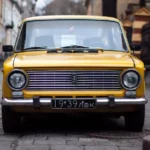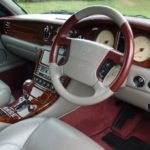It is hard to disregard the impact and direct dependency on the technologies utilized in the various periods when analyzing the numerous facets of human evolution. This is especially true of the tendencies that influenced the development of the vehicle and its variations over time.
From Vintage to Modern: The Evolution of Car Brands That Start With ‘W’

The automobile has changed over the past 150 years from a luxury good to a virtually universal household item that everyone uses on a daily basis. Additionally, it can be used for both public and private transportation. It is now a crucial mode of transportation for traveling swiftly and transporting huge cargo.
The car became the primary accessory for major sporting events, allowed for comfortable enjoyment, and served as a useful way to flaunt riches and uphold the necessary degree of prestige. But a lot of knowledge has already been lost to the mists of time. Brand owners, mergers, and acquisitions are constantly changing due to modern business quirks and economic challenges. While others disintegrate and vanish, some brands and trademarks maintain their identity or name.
Finding the necessary knowledge can be challenging for people who have a curiosity about those who developed the first examples of this type of technology, the key distinctions between companies’ products, and the founding and development of the modern vehicle industry.
Wallyscar
Jeep-based vehicles are the primary product of Wallyscar, a Tunisian company created in 2007 by French engineer Nikola Kagnot.
Currently, the company’s capability permits the annual manufacturing of up to 600 cars, which are shipped to the EU, Qatar, and Panama in addition to the home market. Additionally, it makes parts for Peugeot and Citroen. The business produced its Izis model from 2007 to 2014. A brand-new Wallyscar Iris model has been available since 2017.
W Motors
Ralph Debbas established W Motors, an automobile company based in Dubai, United Arab Emirates, in Lebanon in 2012. It was the region’s first automaker to produce Lux sports models. The business focuses on research and development for high-performance sports automobiles and offers guidance while executing small-scale production.
After creating an electric, multi-use model for ICONIQ Seven, a division of Chinese manufacturer ICONIQ Motors, the brand gained notoriety. The corporation declared in 2020 that it would also produce its own electric and driverless automobiles in addition to its primary product lines.
Waltham
The Waltham Manufacturing Company is an American automotive manufacturer that was established in Waltham, Massachusetts, in 1893. Charles Herman Metz, Professor Herbert L. Thompson, Elmer G. Howe, Frank L. Howe, and William Parrot were among its founders.
The business shifted to self-propelled, three-wheeled, quad bikes, and motorcycle versions in 1898. Three brand names were used by the company to create its goods: Orient, Waltham, and Waltham-Orient. The first was a steam car, followed by the 1902–1903 creations of the Orient Victoriette motor buggy and compact cars. The 20 HP De Luxe Touring from Orient was introduced in 1905. Up to the brand’s closure in 1910, production continued.
Warren-Lambert
Warren Lambert, an agent for Morgan Automobiles, created the Warren-Lambert Engineering Co. Ltd. automobile manufacturer in Richmond, Surrey in 1912. His first car had four wheels and was made of a bicycle.
A ten-horsepower Dorman was created in 1914. Production was suspended by World War One. In Richmond, it was already resumed in 1919. All of the vehicles had two seats. In 1921, the brand-new Dorman model debuted. There were just two prototypes produced. The last model was this one. The company liquidated the brand this year.
Wanderer
When it first began, the US automobile industry lagged behind German car manufacturers in terms of progress. The company Wanderer Werke AG, which has been manufacturing bikes, motorcycles, and cars since 1896, was one of the first examples of this strategy.
Johan Winklhofer and Richard Janike established it as Winklhofer & Jaenicke in Augsburg, Germany. The name was changed to Wanderer in 1911. It acquiesced to Auto Union AG in 1932. Cars and vans were the principal products produced. The Wanderer W25 Stromlinie Spezial and Wanderer W21 from 1936 were the two well-known models. In 1945, it was eliminated.
Wendax
The firm with the shortest history of automotive production is the German automaker Wendax, based in Hamburg-Hamm. It was established in 1933 and manufactured railroad carts and cargo tricycles under the name Draisinenbau Dr. Alpers. In 1949, the first cars were built. And it was put an end to in 1950.
The firm is well-known for producing the first German truck and a half-ton truck shortly after the war. Three-seater roadster variant Aero WS 400 with one rear-wheel drive was evolved as the Wendax WS WS sedan. However, the brand was shut down at the end of 1950 as a result of the subpar automobiles.
Western Star
Semon Emil Knudsen started the American automobile company Western Star, a maker of large commercial vehicles, in 1967. It was made into a division of the White Motor Company, with a Portland, Oregon, office. Both businesses were taken up by Volvo Trucks in 1981.
Western Star Trucks attained financial independence during this time and was purchased by Terry Peabody, who had previously sold the name to Daimler, its Freightliner truck business, ten years earlier. Today, the business manufactures a number of Class 8 trucks with a payload capacity of over 15 tons and specialized machinery.
Westfield
Chris Smith established the sports vehicle business Westfield Sportscars in Dudley Road, Kingswinford, England, in 1982. During a difficult period for Lotus Cars, the new business was successful in selling kits that were modeled after the Lotus Seven.
The company developed two-seat open-top factory and kit vehicles. The first was Colin Chapman’s creations. Westfield made significant modifications to the way its vehicles are built and designed. The company joined Potenza Sports Cars Limited in 2006. Its vehicles, the electric racing car iRacer, and the Sport Turbo, gained European recognition.
Wills Sainte Claire
In 1921, Marysville, Michigan, was home to the Wills Sainte Claire automotive subsidiary of the American business CH Wills & Company. Childe Harold Wills, who took on this name in honor of his mother’s deep love for Lord Byron, created the business.
The river that flows next to the facility gave the brand its name. In 1921, the first automobile debuted. The company was renamed Wills Sainte Claire Incorporated in 1923. Different body shapes could be fitted to the manufactured cars. The brand’s founder shut it down in 1927.
Winnipeg
Winnipeg Motor Cars made a contribution to the Canadian automobile industry between 1921 and 1923. Two new models were produced by the company within the brief time frame, expanding the market for compact touring automobiles.
Its headquarters were in Winnipeg, Manitoba. Frank and Dave Ogletree, EL Herbert, and Louis Arsenault were the founders. The Hatfield Model A-42 tourer, made in Sidney, New York, was the design created. To Winnipeg, where it was built, it was transported disassembled.
Willys
Since 1908, Willys has produced American automobiles. It was started by John Willys. A license to manufacture engines created by Charles Knight was acquired in 1913, resulting in the creation of various models under the Willys-Knight name.
Models for the luxury line Stearns-Knight first appeared as a result of cooperation with Crossley of Manchester in the 1920s and the addition of the F.B. Stearns Company. The affordable Whippet models have been available since 1926.
The Willys 77 model, which served as the Willys Americar’s foundation during the crisis, salvaged the brand. The most well-known military model is the Willys MB. The Willys CJ-1 for civilian use was created in 1944. Jeep CJ2A is also part of a series. The Jeep Wagon station wagon debuted in 1946.
Join 25,000+ smart readers—don’t miss out!








